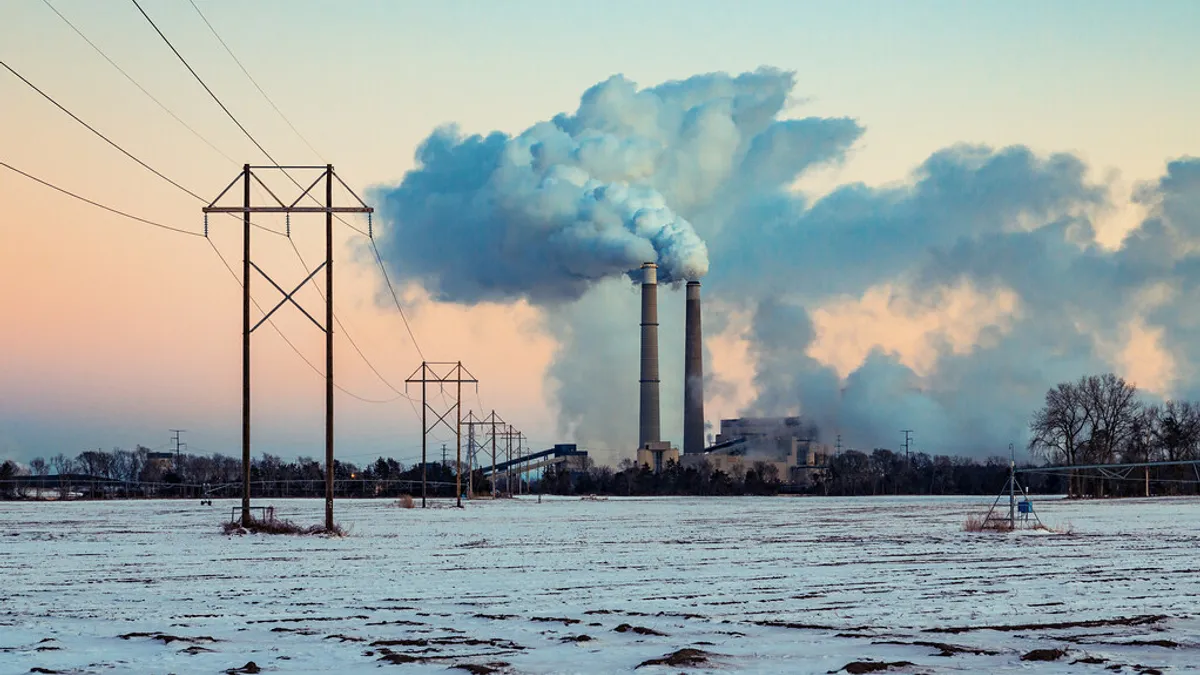Dive Brief:
-
Xcel Energy sees "opportunities across our system" when it comes to changing the operations of its coal fleet, CEO Ben Fowke said in the company's Q4 earnings call.
-
The utility has a goal of reaching 100% carbon-free power by 2050, and in December found it could save millions in dollars and tons of emissions if it reduced its plant operations to economic and seasonal dispatch. The practice could potentially have implications at other facilities across its Midwest and Southwest territories, particularly some of its more water-constrained regions, said Fowke on Thursday.
-
Xcel Energy’s fourth quarter revenues dropped 2.8% below Q4 of last year, falling from almost $2.9 billion to just under $2.8 billion. The quarterly results were "nothing all that remarkable," said Glenrock analyst Paul Patterson, adding that smaller quarterly fluctuations are often due to regulatory and policy shifts as well as variation in the weather.
Dive Insight:
The declining economics of coal have thrown long-term utility operations into question, particularly across the Midcontinent Independent System Operator (MISO) and Southwest Power Pool (SPP). And in arid regions like the Southwest, water scarcity is considered an increased risk to power plant assets under a changing climate.
"The [Minnesota] commission is very interested in understanding how a pause in coal dispatch could work as we start to ready for the day when we don't have any coal in the upper Midwest," said Fowke.
"I think there are opportunities across our system to look at how we dispatch our coal plants, particularly when you look at the variable costs of things like steel-for-fuel and renewable energy," he said. "So we're definitely looking at that down in the [Southwest] region. We've got some water issues that we need to address, and that could be solved with some seasonal dispatch."
Xcel in January made plans to shutter a Texas coal plant a decade early because of those constraints, and Moody's has cited the company as one of the most at-risk utilities to water scarcity.
"With economics in mind ... yeah, it does look for us – [like we're going] to look for more opportunities [for seasonal dispatch] like we're doing here in the upper Midwest," said Fowke.
Coal plant operations will continue to raise questions as renewables and natural gas become more competitive in price, Glenrock Associates analyst Paul Patterson told Utility Dive, and lowering the output in general won't pose a major short-term threat to a regulated utility's bottom line.
"From an earnings perspective, a bigger issue will be if facilities will shut early, what will the regulatory structure be for that," he said, adding that a lot of Xcel's resource choices and successive impacts on earnings will be scrutinized as the company leads the way toward a carbon-free grid.
"With Xcel, a lot of the things you look for is how they are a leader in this steel-for-fuel movement. They are transforming the grid," said Patterson.
Fowke said the utility's short-term moves will include shutting down all its coal and replacing that demand with gas and renewables, though he acknowledged gas additions are becoming less popular.
"We're going to get pushed back on natural gas. But I think the key is to make sure that people understand you shouldn't make perfection be the enemy of a great plan … Our challenge as an industry … is going to be making sure that people see that 2050 is a long way away," he said. "Ultimately, I think we need to look at potentially using renewable gas or hydrogen made out of carbon-free energy and other things, and start blending that in the resource mix."
Ultimately, that pressure from environmental groups will only become more pronounced throughout the 2020 election, as Democratic candidates increasingly push for a ban on natural gas fracking, noted Patterson.
Like many utilities, wind investments are also a major priority for Xcel as the U.S. races toward the expiration of the production tax credit in 2021 — the utility has 2,000 MW of wind under construction that it plans to finalize in 2020 and completed 700 MW across three projects in Q4.
"Without that 60% PTC extension," Xcel would have potentially seen "some bump up in wind, and we still might," Fowke said. "Which is why I'm really pleased we locked down the 100%. I think that's a no-regret strategy in every sense of the word. But I think the technology is still going to compete head on with fossil alternatives, even in a low natural gas environment," he added.
Earnings per share rose to $2.64 per share in 2019, up 6.9% from $2.47 in 2018. Share increases were largely due to rate raises which led to higher earnings margins for electricity and natural gas.
The utility expects to hit a long-term growth rate of 5% to 7%, and is positioned to be in the upper range of that estimate, according to Fowke.
"I think it is doable," based on the company’s rate base growth, Ali Agha, managing director of SunTrust Robinson Humphrey told Utility Dive.
"The data that the company has given us, their potential rate-based growth over that 2019 through '24 period … it’s about 6.7%," he said, which gives the utility "the ammunition to be at least in the upper half, or the upper side of that 5-7%."
Notably, the company’s return on equity in Colorado was verbally approved by regulators at 9.3%, lower than it had asked for, which Xcel is "disappointed" about, said Fowke.














